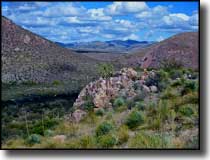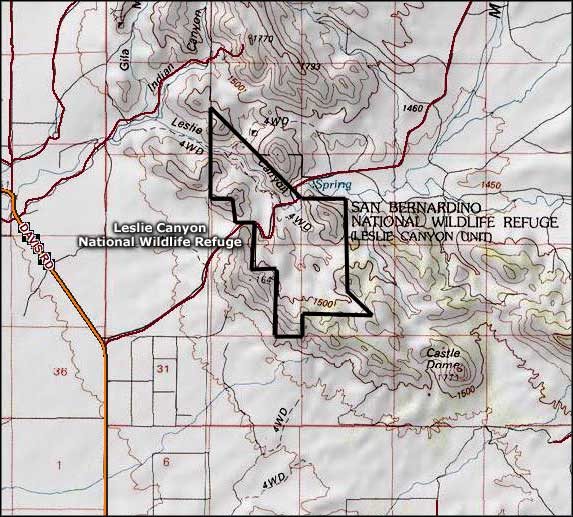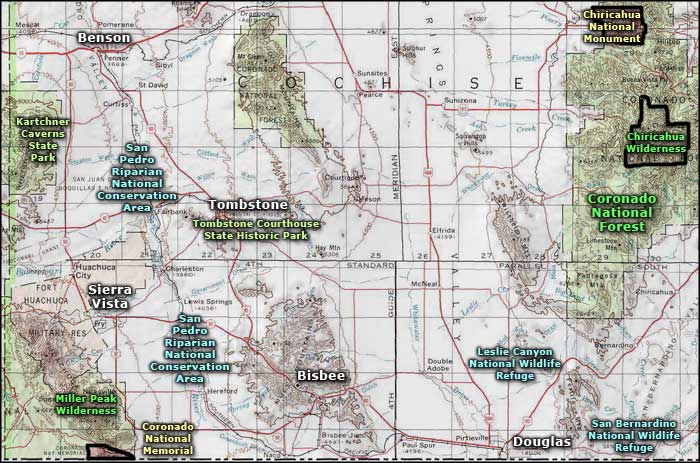
Leslie Canyon National Wildlife Refuge

1988 saw the creation of the 2,770-acre Leslie Canyon National Wildlife Refuge, specifically to preserve and protect habitat for the endangered Yaqui topminnow and the Yaqui chub. A rare velvet ash-cottonwood-black willow gallery forest is also part of the refuge. This is on the edge of the San Bernardino Valley in the Rio Yaqui Basin, an area that used to support marshy wetlands, springs and flowing creeks. The floor of the San Bernardino Valley used to be a large (10 miles long by 1 mile wide) luxuriant grassland. But then the Europeans arrived and brought with them their life-negative farming, mining and livestock practices. It wasn't too long before the water table in this sensitive area began to drop, and species found here began to go extinct while invasive species moved in from elsewhere and took over.
Leslie Canyon is a rough, mountainous terrain with Leslie Creek running through the middle of it. That puts this lush riparian habitat and gallery forest in the middle of an uplands dominated by desert grasses and shrubs.
These days, the US Fish & Wildlife Service is working to protect and restore the region's springs, streams, ponds and extensive wetlands. They are also taking action to stabilize existing populations of fish and establish self-sustaining populations where they can. They are recreating wetlands and marshes out of old agricultural fields and reseeding upland areas with native grasses. Fish & Wildlife are also re-introducing fire (in the form of controlled burns) to remove decadent vegetation and return nutrients to the soil. A large part of this effort goes into controlling the growth and spread of the non-native mesquite trees. Slowly, their efforts are paying off and the land, in tandem with its wildlife and fish species, is slowly recovering.
More than 270 species of birds have been documented at Leslie Canyon National Wildlife Refuge. Regulars among the mammals are whitetail deer, mule deer, mountain lion, javelina, coyote, raccoon, gray fox, bobcat, badger, jackrabbit, ground squirrel, kangaroo rat, coatimundi and cottontail rabbit. You'll find checkered and Mexican garter snakes, horned toads, desert kingsnakes, ringneck snakes, Madrean alligator lizard, Chiricahua leopard frogs, Gila monsters, Sonoran whipsnakes and the justly famous western diamondback and black-tailed species of rattlesnakes.
Leslie Canyon is open to photography, birdwatching and hiking but no hunting, fishing or camping is allowed. To get there: go north of Douglas on Highway 191 to about 1/4 mile past mile marker 11. Take the paved road there east for about 1 mile to the refuge office complex.

Leslie Canyon National Wildlife Refuge map

Leslie Canyon National Wildlife Refuge area map
